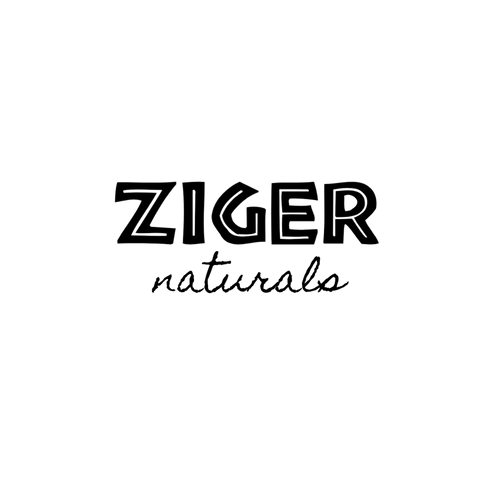Beauty and Justice Are Intertwined
Beauty was never meant to be harmful. The way we care for our hair, skin, and body reflects how we honor God’s creation — ourselves included.
💬 “Speak up for those who cannot speak for themselves; ensure justice for those being crushed.” — Proverbs 31:8–9
Clean beauty isn’t a luxury or trend; for many Black women, it’s a matter of health protection and environmental justice. Research reveals that many hair care products marketed to women of color contain harmful chemicals linked to cancers and hormonal disruption.
What the Science Reveals
1. Hair Straighteners and Uterine Cancer
According to a 2022 NIH study, women who frequently used chemical straighteners faced higher risk of uterine cancer. Black women were among the most affected, reflecting deep disparities in product formulation and marketing.
2. Hair Dyes and Relaxers Linked to Breast Cancer
A 2021 study in Environmental Research found associations between hair dye/relaxer use and certain breast tumor features. For many women, this isn’t just about appearance—it’s about survival.
3. Pregnancy and Endocrine Disruption
A 2021 study in Environmental Health discovered that chemicals in some hair products used during pregnancy could affect gestational age at delivery. Exposure starts before birth.
4. Hormonal Activity in Black Hair Care Products
A 2021 study in Exposure Science & Environmental Epidemiology found hormonal activity in commonly used Black hair care products. The conclusion? Health disparities are being compounded through products marketed to us.

When Beauty Becomes Environmental Injustice
Toxic beauty isn’t just a personal issue — it’s a systemic one. When the safest products are the least accessible to certain groups, it becomes environmental injustice.
💬 “Learn to do good; seek justice, correct oppression.” — Isaiah 1:17
The same chemicals that harm our bodies also pollute the earth. Every wash, rinse, and rinse-off treatment eventually flows into God’s rivers and soil. Clean beauty restores the balance between people and planet.
Stewardship of the Body and the Earth
“Do you not know that your bodies are temples of the Holy Spirit?” — 1 Corinthians 6:19–20
Choosing what goes on our scalp is just as important as what goes into our bodies. God gave us plants, oils, and herbs that nourish from the inside out — ingredients like aloe vera, shea butter, and castor oil that heal instead of harm.
🌿 Chrissy’s Clean Haircare Checklist
5 Ingredients to Avoid
- Formaldehyde & formaldehyde-releasing preservatives – carcinogenic, often in relaxers.
- Phthalates – disrupt hormones and reproductive health.
- Parabens – mimic estrogen, linked to breast cancer.
- Synthetic fragrance – can hide hundreds of toxins.
- Lye (Sodium Hydroxide) – damages scalp and follicle health.
5 Ingredients to Embrace
- Aloe Vera – calms scalp inflammation and adds slip.
- Shea Butter – seals in moisture and strengthens ends.
- Olive Oil – deeply moisturizing and rich in antioxidants.
- Amla / Hibiscus Powder – improves thickness and natural shine.
- Black Castor Oil – boosts hair growth and scalp circulation.
Clean Beauty Resources You Can Trust
While the most popular hair care items often stocked at your local beauty supply may contain harmful chemicals, there are trustworthy organizations and brands dedicated to your wellbeing.
🪴 BLK + GRN
A Black-owned wellness marketplace offering non-toxic, sustainable beauty and self-care products made by Black artisans.
🫧 Think Dirty - Shop Clean:
This app is specifically for cosmetics and personal care products. You can scan the barcode to get the Dirty Meter® score, which is a comprehensive rating based on potential toxic ingredients.
🫒 OnSkin - AI Product Scanner:
This app focuses on cosmetic and skincare ingredient analysis. It uses AI to analyze ingredients and provides a safety score (Excellent, Good, Not great, Bad).
🌸 Campaign for Safe Cosmetics:
A public health advocacy organization that works to eliminate toxic chemicals from beauty and personal care products while promoting transparency, safer ingredients, and equity.
📱 Yuka App:
A mobile scanner that lets you analyze food and cosmetic labels, giving ingredient breakdowns and recommending cleaner alternatives.
🌿 EWG Healthy Living App:
Developed by the Environmental Working Group, this app rates food and beauty products from Low Hazard to High Hazard based on ingredient safety and transparency.
A Path Toward Health Equity
Clean beauty is about justice, access, and transparency. Every woman deserves safe, effective products without hidden toxins.
💬 “He has shown you, O man, what is good. And what does the Lord require of you? To act justly, to love mercy, and to walk humbly with your God.” — Micah 6:8
Our choices ripple outward — shaping industries, protecting ecosystems, and uplifting communities. When we honor our health and the earth, we live out the Gospel through stewardship and love.
Clean beauty isn’t about perfection; it’s about awareness, action, and alignment with the Creator’s design.
Every ingredient choice is a prayer in motion — one that says, “I value what God made.”
🌺 “Justice in beauty is part of God’s justice for His creation.”
References
National Institutes of Health (NIH). Hair straightening chemicals associated with higher uterine cancer risk. (October 17, 2022).
https://www.nih.gov/news-events/news-releases/hair-straightening-chemicals-associated-higher-uterine-cancer-risk
Rao, R., McDonald, J. A., Barrett, E. S., Greenberg, P., Teteh, D. K., Montgomery, S. B., Qin, B., Lin, Y., Hong, C.-C., Ambrosone, C. B., Demissie, K., Bandera, E. V., & Llanos, A. A. (2021). Associations of hair dye and relaxer use with breast tumor clinicopathologic features: findings from the Women’s Circle of Health Study. Environmental Research, 203, 111863.
https://pubmed.ncbi.nlm.nih.gov/34390715/
Preston, E. V., Fruh, V., Quinn, M. R., Hacker, M. R., Wylie, B. J., O’Brien, K., Mahalingaiah, S., & James-Todd, T. (2021). Endocrine disrupting chemical-associated hair product use during pregnancy and gestational age at delivery: a pilot study. Environmental Health, 20(1), 86. https://ehjournal.biomedcentral.com/articles/10.1186/s12940-021-00772-5
James-Todd, T., Connolly, L., Preston, E. V., Quinn, M. R., Plotan, M., Xie, Y., Gandi, B., & Mahalingaiah, S. (2021). Hormonal activity in commonly used Black hair care products: evaluating hormone disruption as a plausible contribution to health disparities. Journal of Exposure Science & Environmental Epidemiology, 31(6), 476–486. https://pubmed.ncbi.nlm.nih.gov/33958708/





